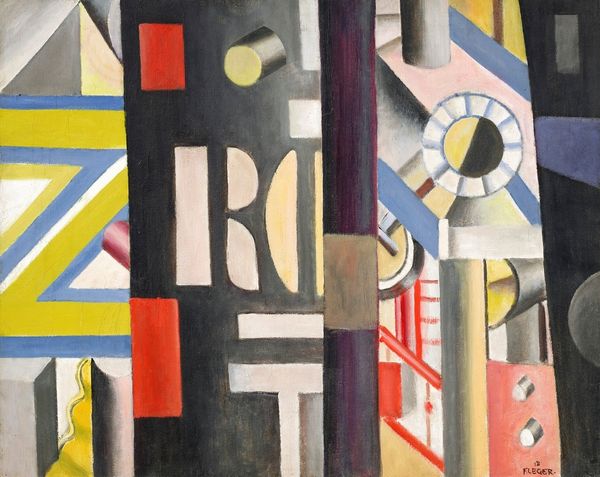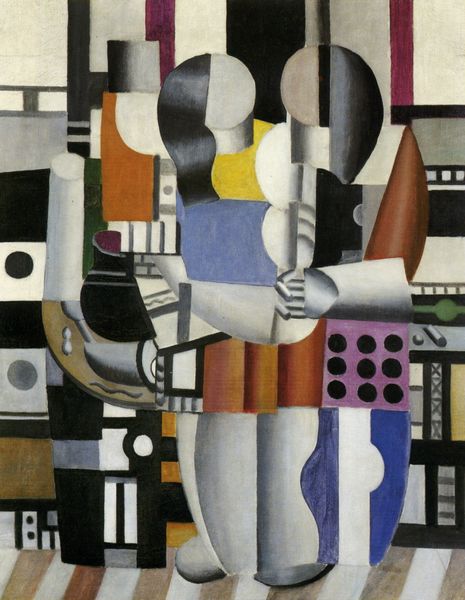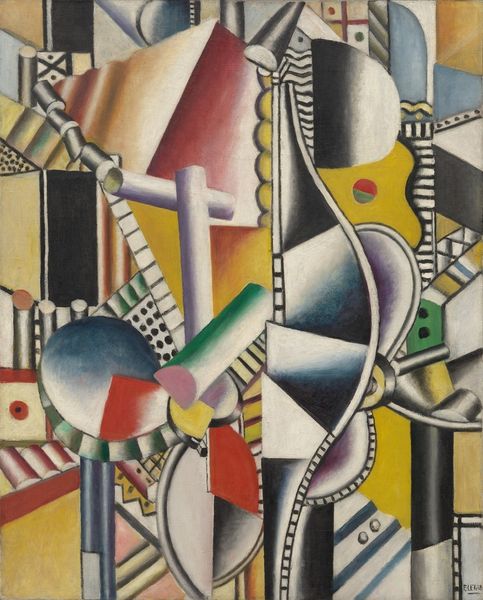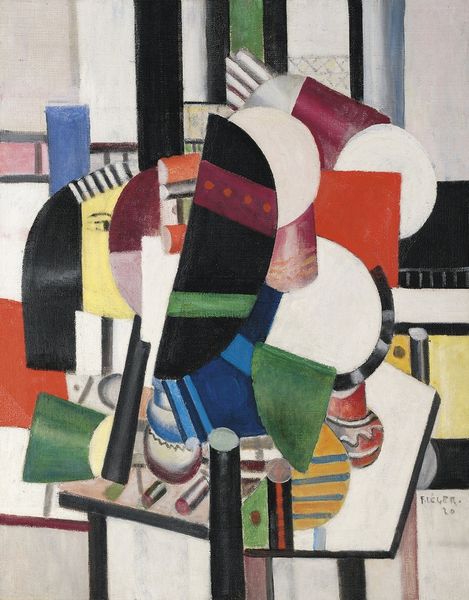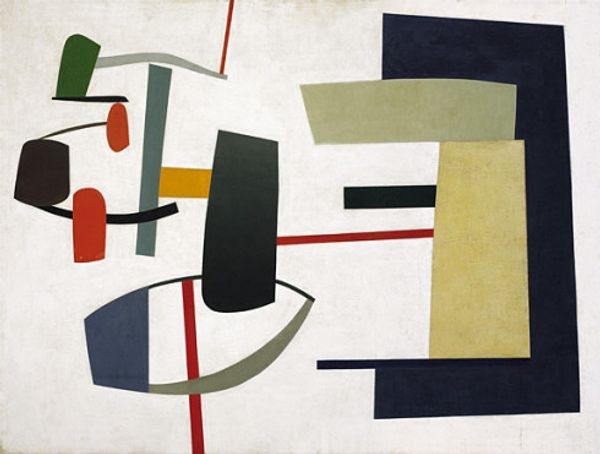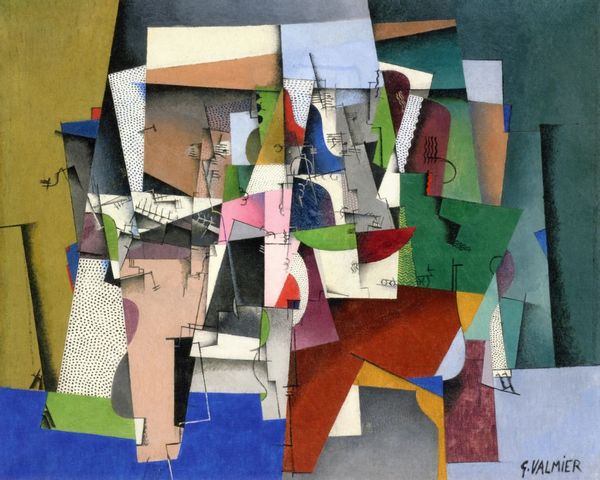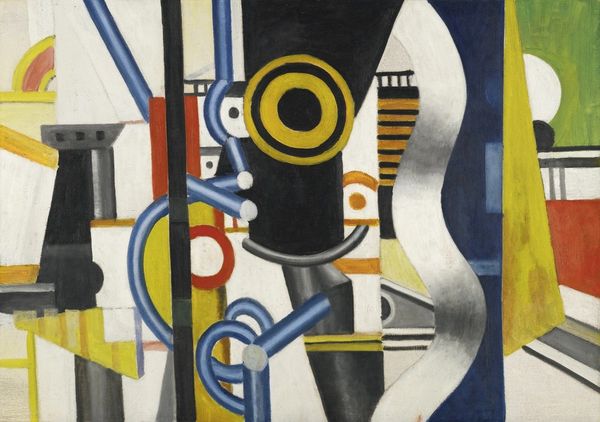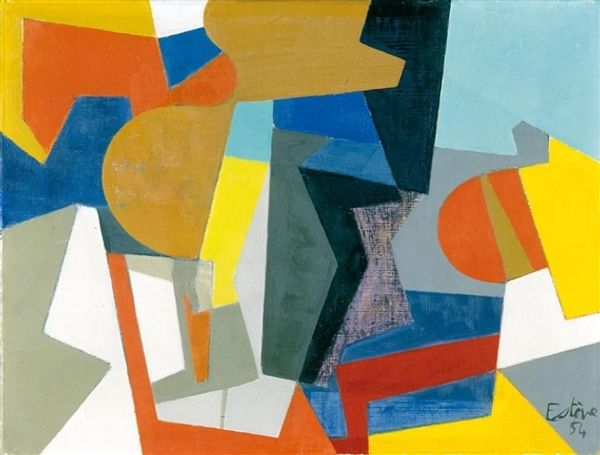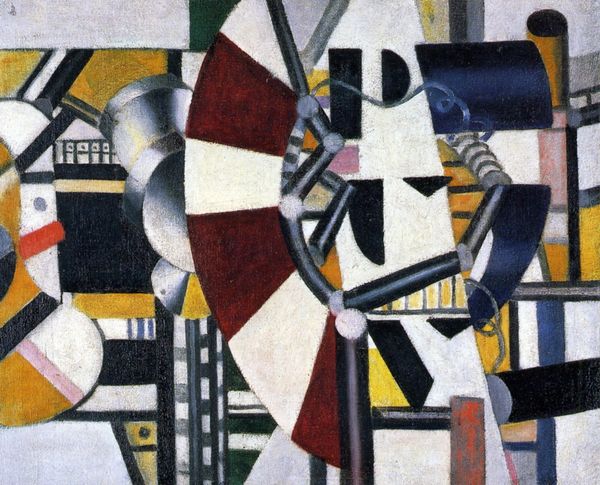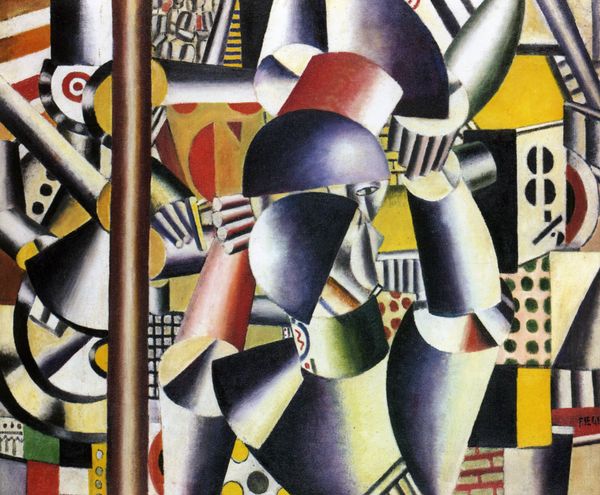
painting, oil-paint
#
art-deco
#
cubism
#
abstract painting
#
painting
#
oil-paint
#
abstract
#
neo expressionist
#
geometric
#
abstraction
#
cityscape
#
modernism
Copyright: Modern Artists: Artvee
Curator: Standing before us is Fernand Léger’s "La Roue bleue, état définitif," painted in 1920. It's a striking oil on canvas, a prime example of Léger’s machine aesthetic. Editor: Immediately, the colour grabs me. A bold cobalt blue attempts to pop through this almost regimented industrial skeleton, and you see immediately the urban environment to which this is referring. Curator: Indeed, the artwork coincides with a period of immense industrial growth in Europe. Léger, having witnessed the mechanization of warfare firsthand during World War I, was both fascinated and concerned with the impact of technology on society. The artwork reveals this complicated cultural history of Léger and Europe. Editor: The wheel seems to represent a certain utopian desire to progress, but ultimately also reminds us that our current society rests upon foundations built in dehumanization, alienation, and war. Curator: He integrates the machine form, and in this case the wheel, into the human experience. Note how these abstract forms intersect and overlap. He moves us from what some thought should be fine art. Léger was moving toward an aesthetic relevant to modernity's focus on function and precision. Editor: Yet there's also a dynamism here. This abstraction feels both deliberate and subversive. Is he advocating for the future of labour? Or rather inviting us to consider that modern labour and capital require so many moving, intersecting, potentially self-destructive parts? Curator: What strikes me most about Léger’s composition is how he attempted to reconcile artistic practice with social realities. We see, not always successfully, his attempt to elevate everyday life, everyday experience through accessible design. Editor: What I take from Léger is how the machine, even rendered abstractly, embodies complex anxieties about progress, production, and who benefits from it all. Curator: Well, thank you for shedding some light and further interrogating a key example of interwar modernist work! Editor: My pleasure, thanks for walking through the sociopolitical landscape of its time.
Comments
No comments
Be the first to comment and join the conversation on the ultimate creative platform.
